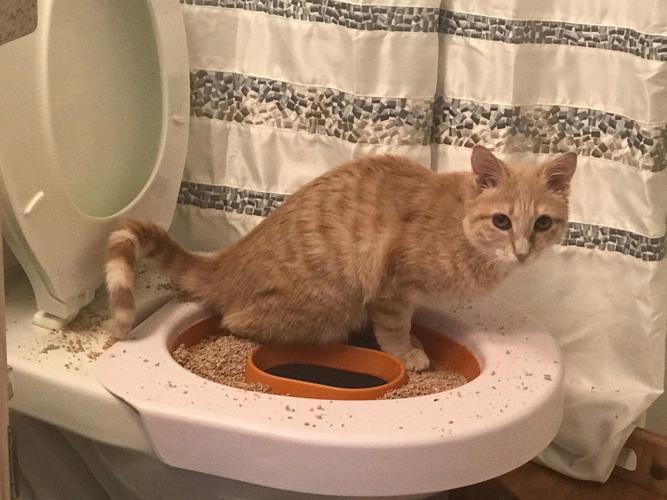Reasons You Must Never Flush Cat Poop Down Your Toilet - Critical Information
Reasons You Must Never Flush Cat Poop Down Your Toilet - Critical Information
Blog Article
This post below on the subject of Can You Flush Cat Poo or Litter Down the Toilet? is exceedingly entertaining. Don't miss it.

Introduction
As cat owners, it's essential to be mindful of exactly how we deal with our feline good friends' waste. While it may seem practical to flush feline poop down the commode, this technique can have damaging repercussions for both the atmosphere and human health.
Alternatives to Flushing
The good news is, there are more secure and a lot more accountable ways to take care of cat poop. Take into consideration the complying with choices:
1. Scoop and Dispose in Trash
One of the most common approach of taking care of feline poop is to scoop it right into a naturally degradable bag and toss it in the trash. Be sure to utilize a committed litter inside story and dispose of the waste immediately.
2. Use Biodegradable Litter
Choose eco-friendly cat litter made from materials such as corn or wheat. These trashes are environmentally friendly and can be safely dealt with in the trash.
3. Bury in the Yard
If you have a backyard, take into consideration hiding pet cat waste in an assigned area far from vegetable gardens and water sources. Make sure to dig deep adequate to prevent contamination of groundwater.
4. Install a Pet Waste Disposal System
Purchase a family pet garbage disposal system specifically designed for cat waste. These systems use enzymes to break down the waste, reducing odor and ecological influence.
Health and wellness Risks
Along with environmental concerns, purging cat waste can additionally present health and wellness risks to human beings. Feline feces may have Toxoplasma gondii, a bloodsucker that can cause toxoplasmosis-- a possibly severe disease, particularly for expectant women and people with weakened body immune systems.
Environmental Impact
Purging feline poop presents unsafe pathogens and bloodsuckers into the water supply, positioning a substantial risk to water ecosystems. These contaminants can negatively affect aquatic life and concession water quality.
Final thought
Responsible animal possession expands past providing food and shelter-- it likewise includes correct waste monitoring. By avoiding purging pet cat poop down the toilet and opting for alternate disposal approaches, we can lessen our ecological impact and secure human health and wellness.
Why Can’t I Flush Cat Poop?
It Spreads a Parasite
Cats are frequently infected with a parasite called toxoplasma gondii. The parasite causes an infection called toxoplasmosis. It is usually harmless to cats. The parasite only uses cat poop as a host for its eggs. Otherwise, the cat’s immune system usually keeps the infection at low enough levels to maintain its own health. But it does not stop the develop of eggs. These eggs are tiny and surprisingly tough. They may survive for a year before they begin to grow. But that’s the problem.
Our wastewater system is not designed to deal with toxoplasmosis eggs. Instead, most eggs will flush from your toilet into sewers and wastewater management plants. After the sewage is treated for many other harmful things in it, it is typically released into local rivers, lakes, or oceans. Here, the toxoplasmosis eggs can find new hosts, including starfish, crabs, otters, and many other wildlife. For many, this is a significant risk to their health. Toxoplasmosis can also end up infecting water sources that are important for agriculture, which means our deer, pigs, and sheep can get infected too.
Is There Risk to Humans?
There can be a risk to human life from flushing cat poop down the toilet. If you do so, the parasites from your cat’s poop can end up in shellfish, game animals, or livestock. If this meat is then served raw or undercooked, the people who eat it can get sick.
In fact, according to the CDC, 40 million people in the United States are infected with toxoplasma gondii. They get it from exposure to infected seafood, or from some kind of cat poop contamination, like drinking from a stream that is contaminated or touching anything that has come into contact with cat poop. That includes just cleaning a cat litter box.
Most people who get infected with these parasites will not develop any symptoms. However, for pregnant women or for those with compromised immune systems, the parasite can cause severe health problems.
How to Handle Cat Poop
The best way to handle cat poop is actually to clean the box more often. The eggs that the parasite sheds will not become active until one to five days after the cat poops. That means that if you clean daily, you’re much less likely to come into direct contact with infectious eggs.
That said, always dispose of cat poop in the garbage and not down the toilet. Wash your hands before and after you clean the litter box, and bring the bag of poop right outside to your garbage bins.
https://trenchlesssolutionsusa.com/why-cant-i-flush-cat-poop/

Do you really like reading about How to Dispose of Cat Poop and Litter Without Plastic Bags? Post a remark below. We will be delighted to hear your thoughts about this posting. We hope that you come back again in the future. Do you know somebody else who is occupied with the subject? Why not share it. Thank-you for your time invested reading it.
Call Today Report this page